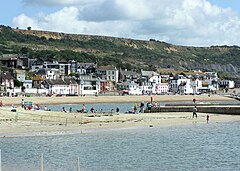Timothy Egan won the National Book Award for
The Worst Hard Time: The Untold Story of Those Who Survived the Great American Dust Bowl written in 2005. His nonfiction narratives are interesting and they bring the history of our American heritage up front and close. Egan's 2009 nonfiction story,
The Big Burn, is about how Gifford Pinchot was first appointed 'confidential forest agent; a spy with a green eye' by President McKinley. Originally, just prior to leaving office, President Cleveland had used an act passed 1891 to put aside over twenty-one million acres of forest reserves on February 22, 1897. However, President McKinley suspended Cleveland's order, and it was not until Teddy Roosevelt became President, after McKinley was assassinated, that Pinchot was given the power to create the Forest Service and hire forest rangers to man the National Parks. Initially, Congress gave little support, but it was the largest forest fire in American history that hit the Bitterroots Mountains of Montana and Idaho in 1910, that created the need for an actual working Forest Service. Read this story to understand the personalities of the men and women who were active players, in this precious time in American History, in creating the National Parks. It is these parks that many Americans now take for granted, with some even proposing that they be converted back to private ownership. This story made me realize the frustrating work and the resolve required of these early forest rangers to make their dreams come true. This is a fascinating story, told well by a great writer of Natural History, that mixes the human interest story with the natural setting.
 Remarkable Creatures is the latest book by Tracy Chevalier. Known for her historial fiction, with good characterization, she takes the story of two women at the beginning of the 19th century and weaves their story together in believable sequences. Mary Anning was a resident of Lyme Regis, a costal town on the shore of the English Channel in West Dorset, England. Her special gift was her abilty to invision the hidden parts of fossils on the costal cliffs. She is known for her discovery of the first complete pterodactyl in Great Britian. The name is now changed to a pterosaur. She was a villager, with a poor background, and her family would collect the "curies", a name given to the fossils which stood for curiosities as people then called them. The story is about her friendship with Elizabeth Philpot, a collector of fossils, a woman of a grander education and also a few years her senior. Both women lived in the Lyme Regis area, but this book is a work of fiction. Our Adult Book Discussion group at the the Tipp City Library will be diiscussing this book on Monday, June 27 at 7 pm. Feel free to join the discussion if you have read the book.
Remarkable Creatures is the latest book by Tracy Chevalier. Known for her historial fiction, with good characterization, she takes the story of two women at the beginning of the 19th century and weaves their story together in believable sequences. Mary Anning was a resident of Lyme Regis, a costal town on the shore of the English Channel in West Dorset, England. Her special gift was her abilty to invision the hidden parts of fossils on the costal cliffs. She is known for her discovery of the first complete pterodactyl in Great Britian. The name is now changed to a pterosaur. She was a villager, with a poor background, and her family would collect the "curies", a name given to the fossils which stood for curiosities as people then called them. The story is about her friendship with Elizabeth Philpot, a collector of fossils, a woman of a grander education and also a few years her senior. Both women lived in the Lyme Regis area, but this book is a work of fiction. Our Adult Book Discussion group at the the Tipp City Library will be diiscussing this book on Monday, June 27 at 7 pm. Feel free to join the discussion if you have read the book.  Lyme Regis today
Lyme Regis today 